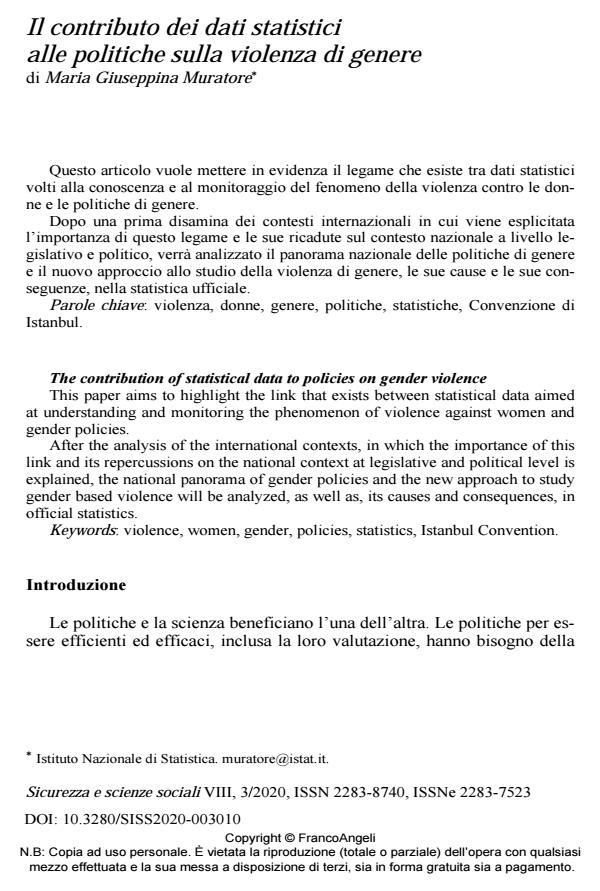The contribution of statistical data to policies on gender violence
Journal title SICUREZZA E SCIENZE SOCIALI
Author/s Maria Giuseppina Muratore
Publishing Year 2021 Issue 2020/3
Language Italian Pages 24 P. 129-152 File size 392 KB
DOI 10.3280/SISS2020-003010
DOI is like a bar code for intellectual property: to have more infomation
click here
Below, you can see the article first page
If you want to buy this article in PDF format, you can do it, following the instructions to buy download credits

FrancoAngeli is member of Publishers International Linking Association, Inc (PILA), a not-for-profit association which run the CrossRef service enabling links to and from online scholarly content.
This paper aims to highlight the link that exists between statistical data aimed at understanding and monitoring the phenomenon of violence against women and gender policies. After the analysis of the international contexts, in which the importance of this link and its repercussions on the national context at legislative and political level is explained, the national panorama of gender policies and the new approach to study gender based violence will be analyzed, as well as, its causes and conse-quences, in official statistics.
Keywords: Violence, women, gender, policies, statistics, Istanbul Convention.
Maria Giuseppina Muratore, Il contributo dei dati statistici alle politiche sulla violenza di genere in "SICUREZZA E SCIENZE SOCIALI" 3/2020, pp 129-152, DOI: 10.3280/SISS2020-003010